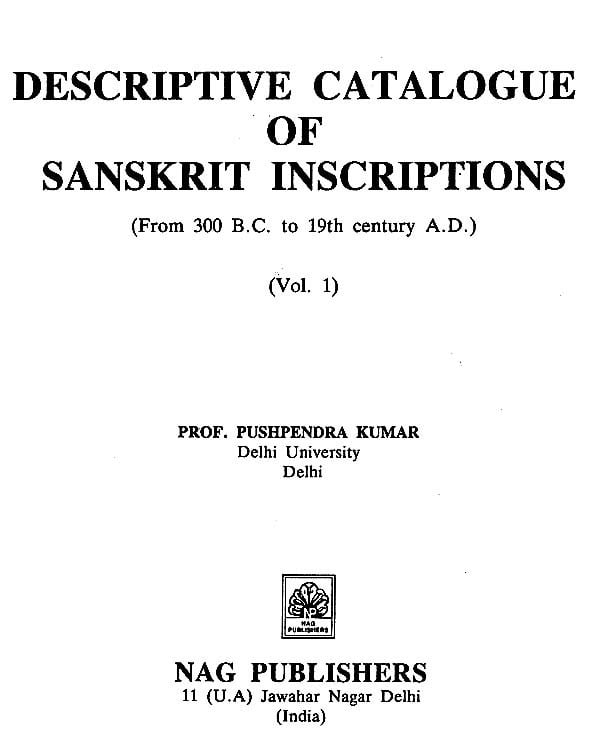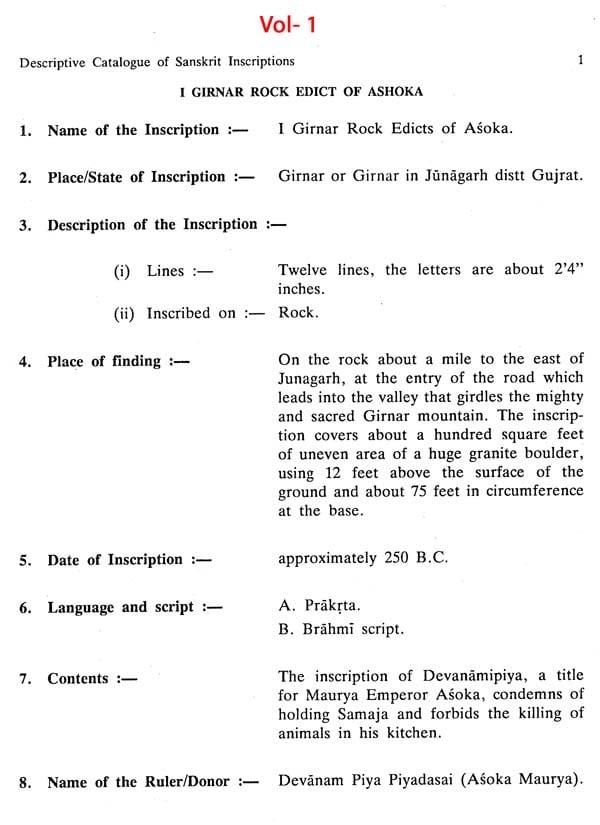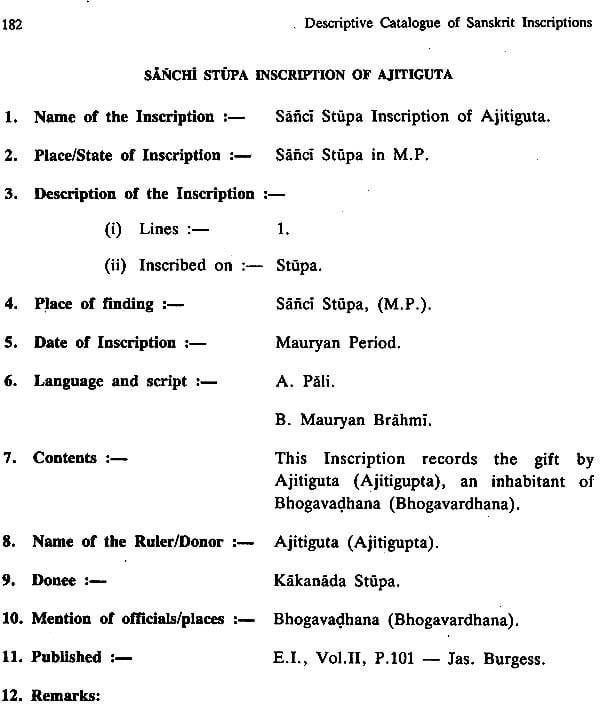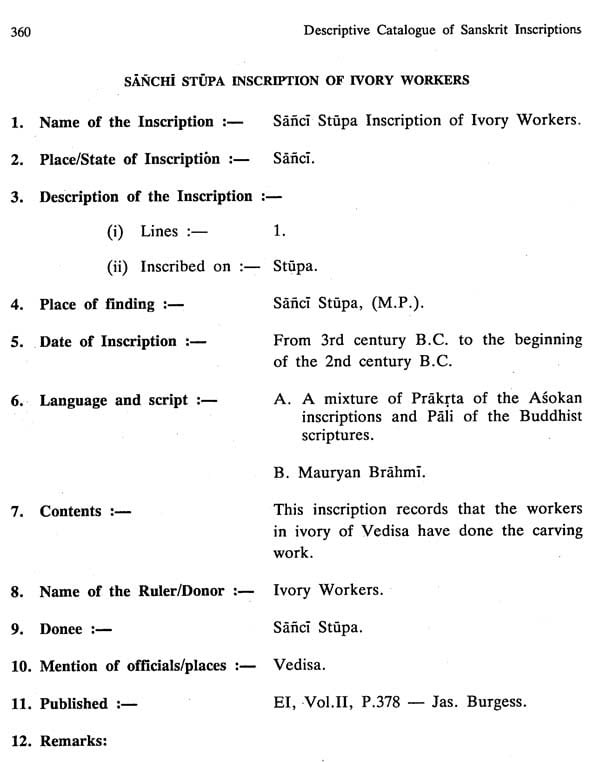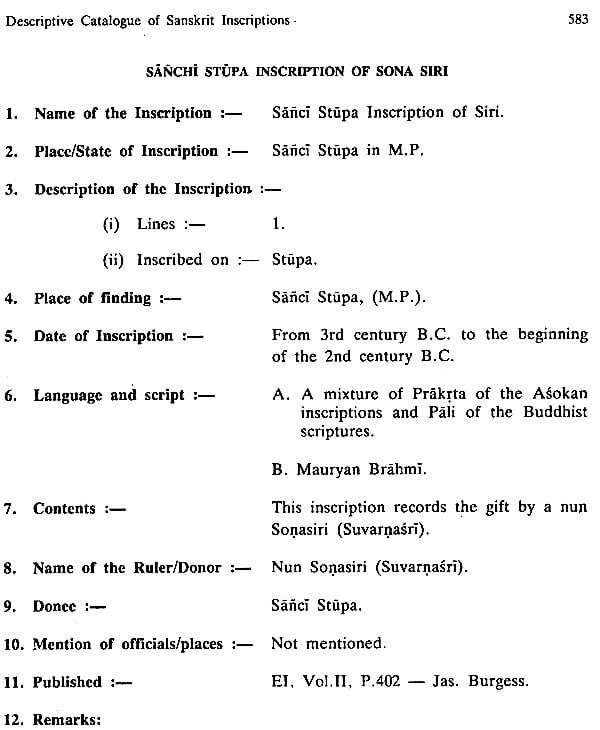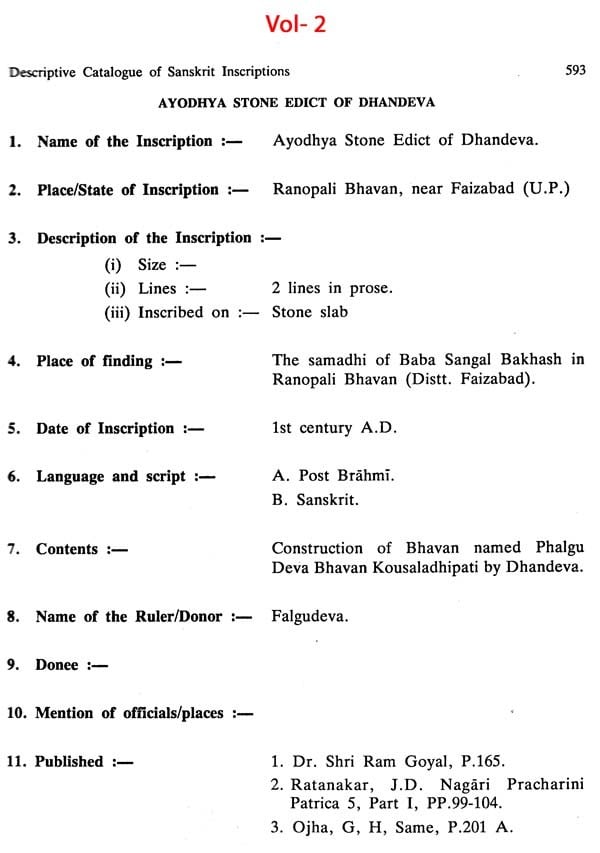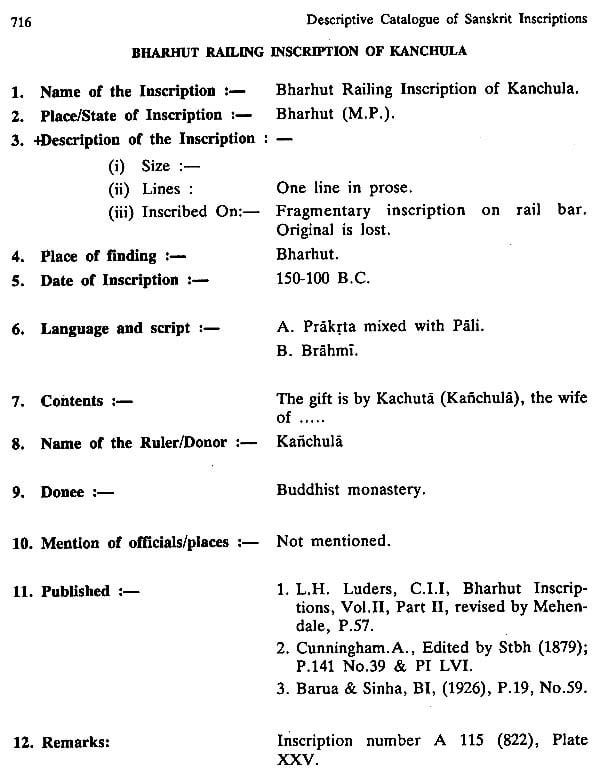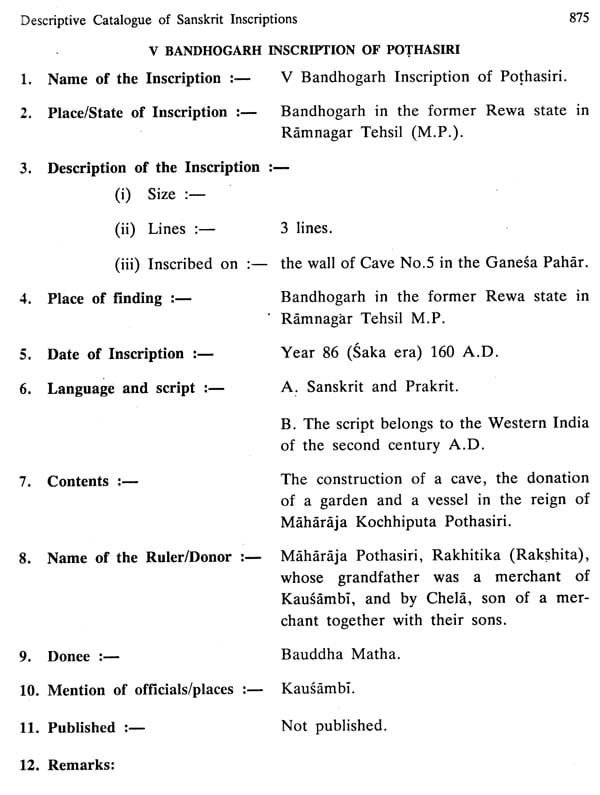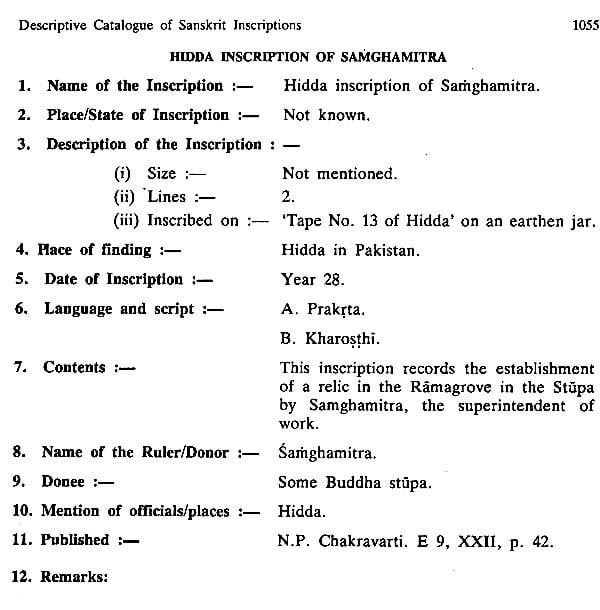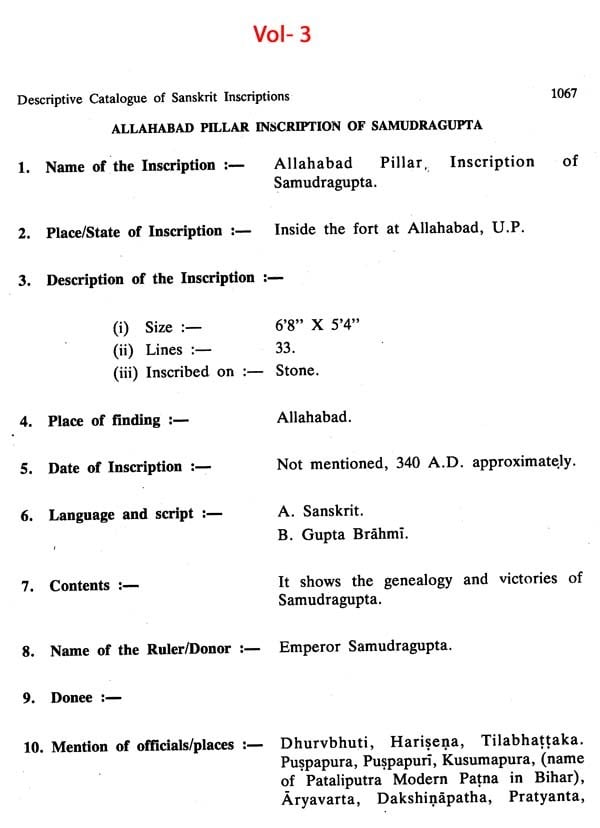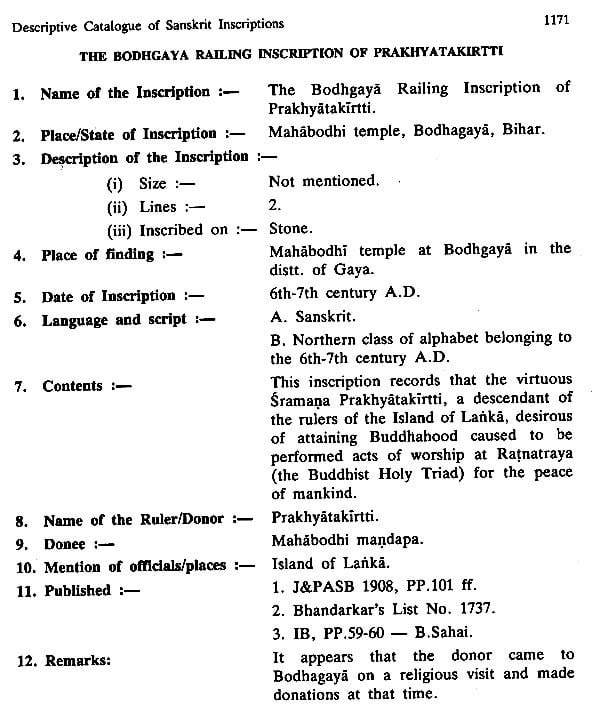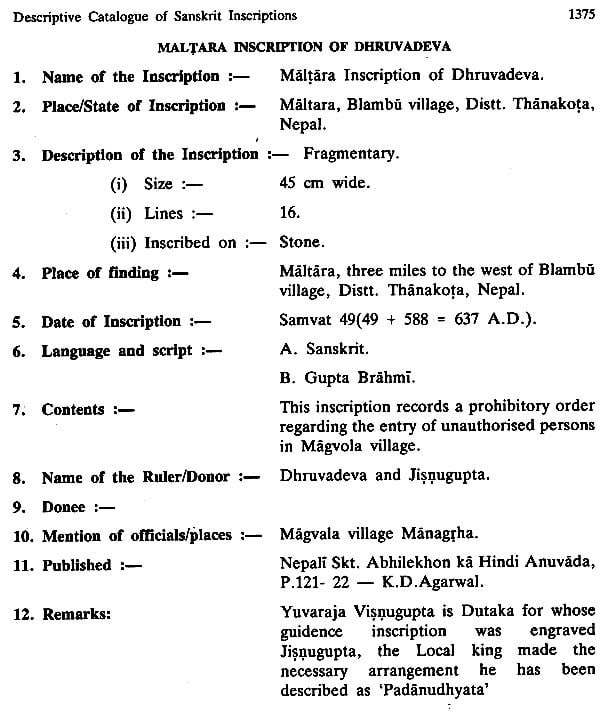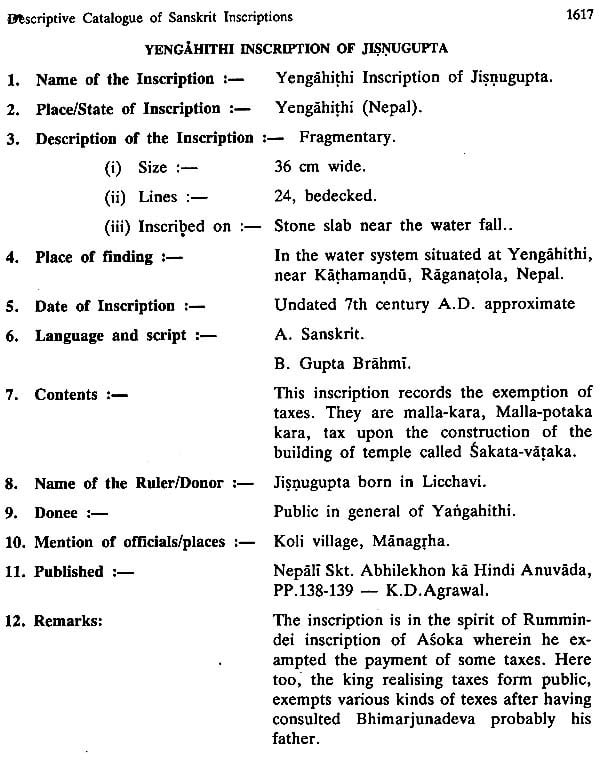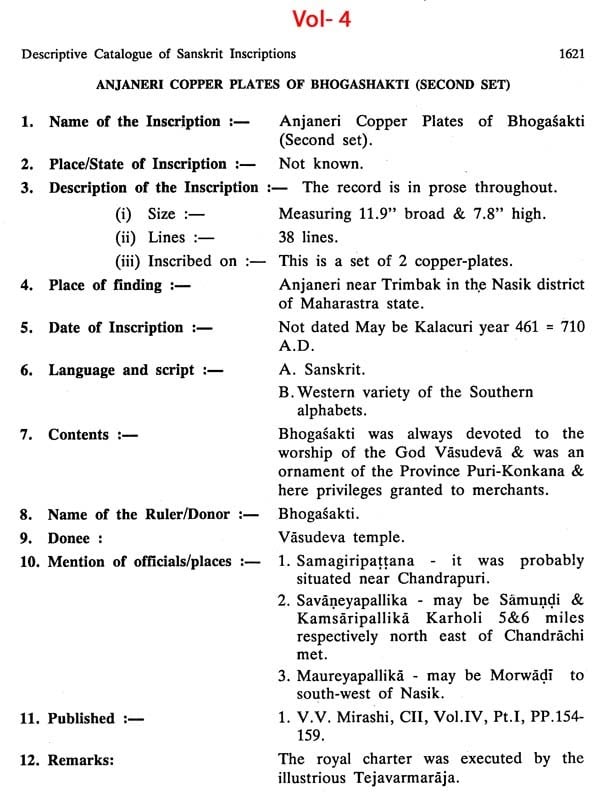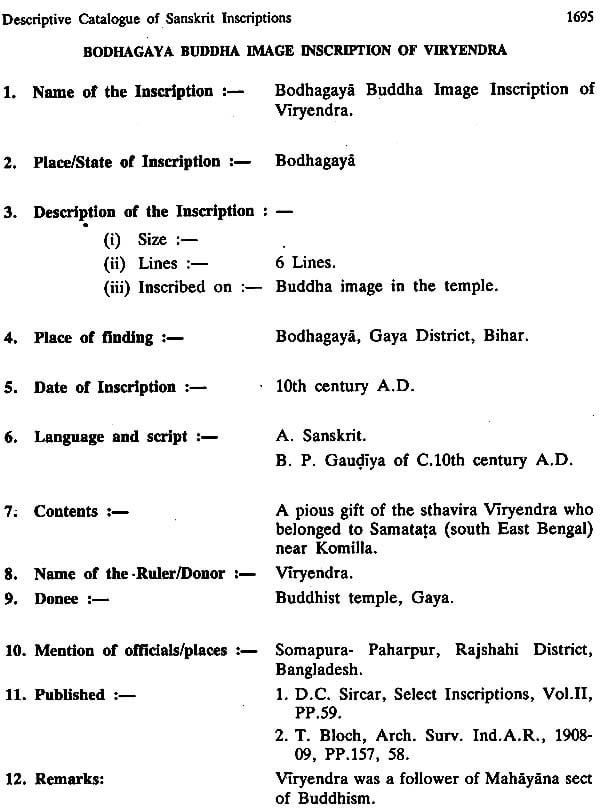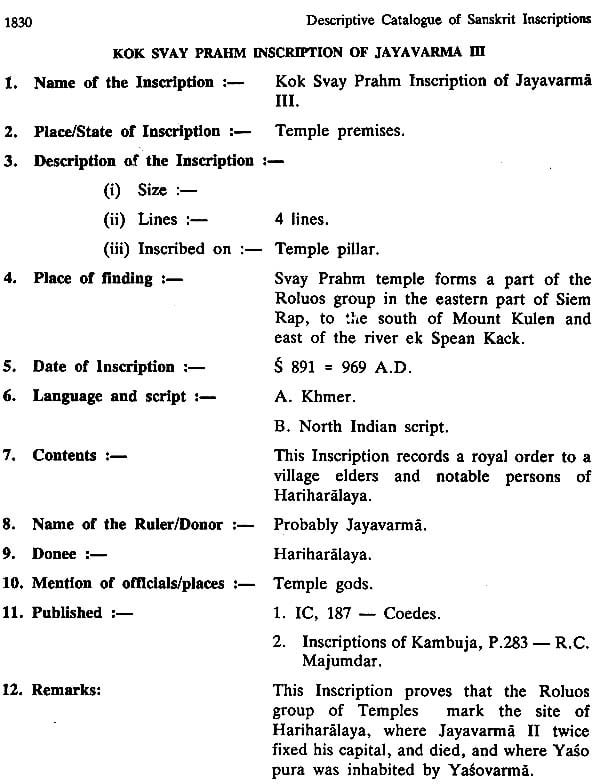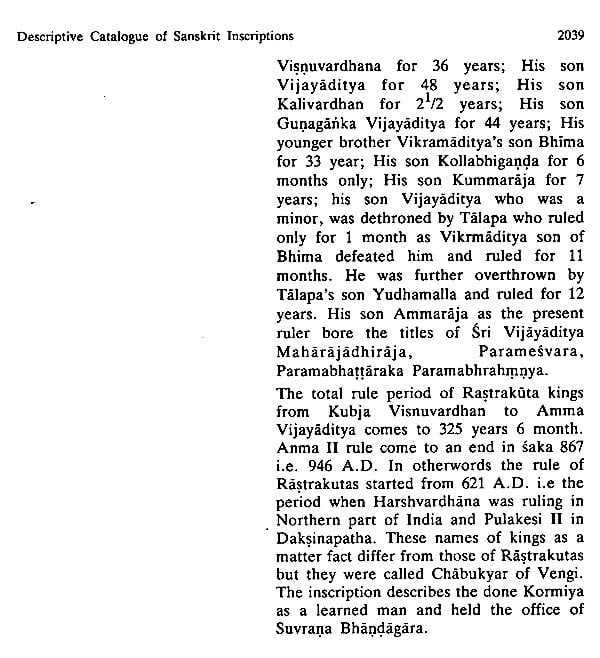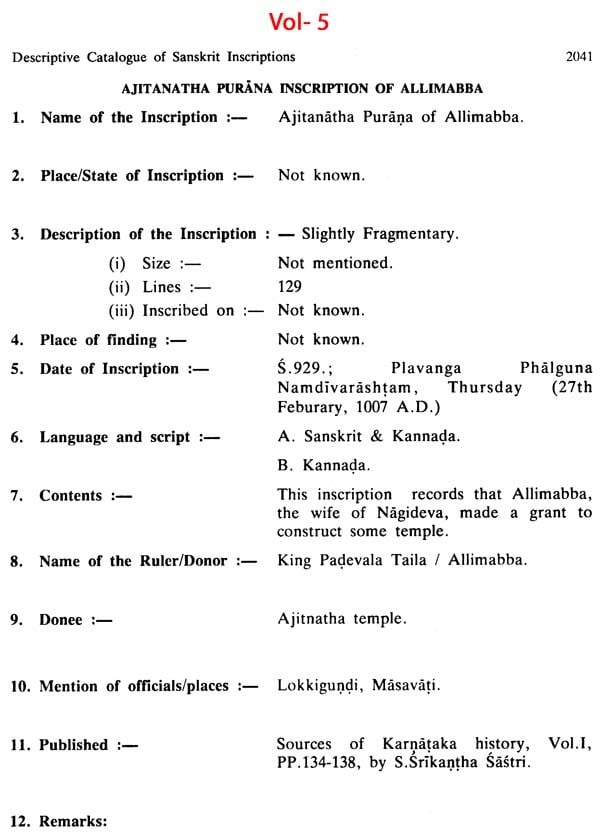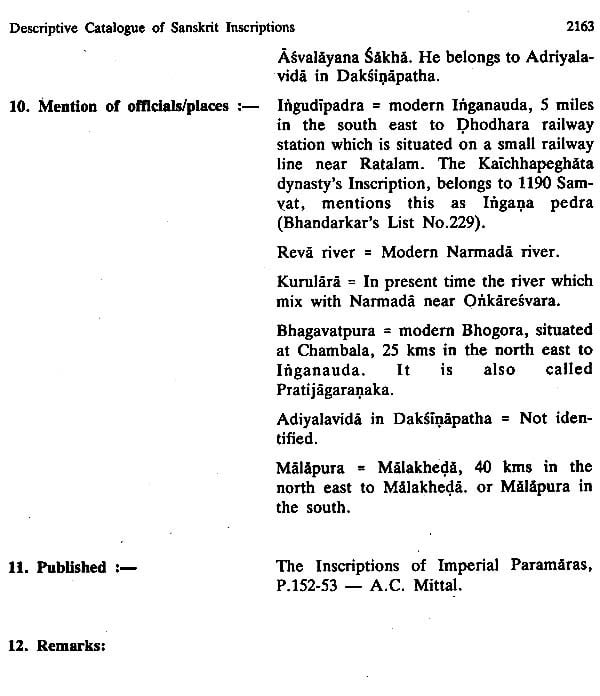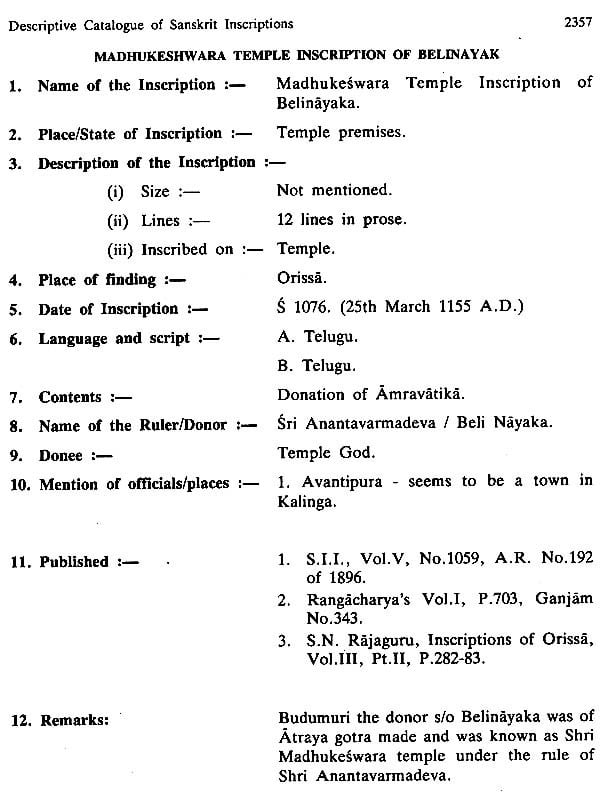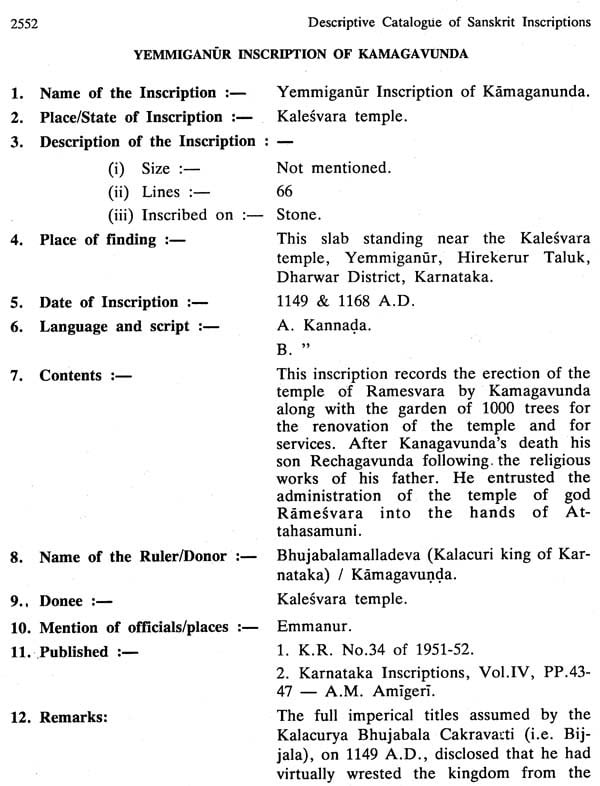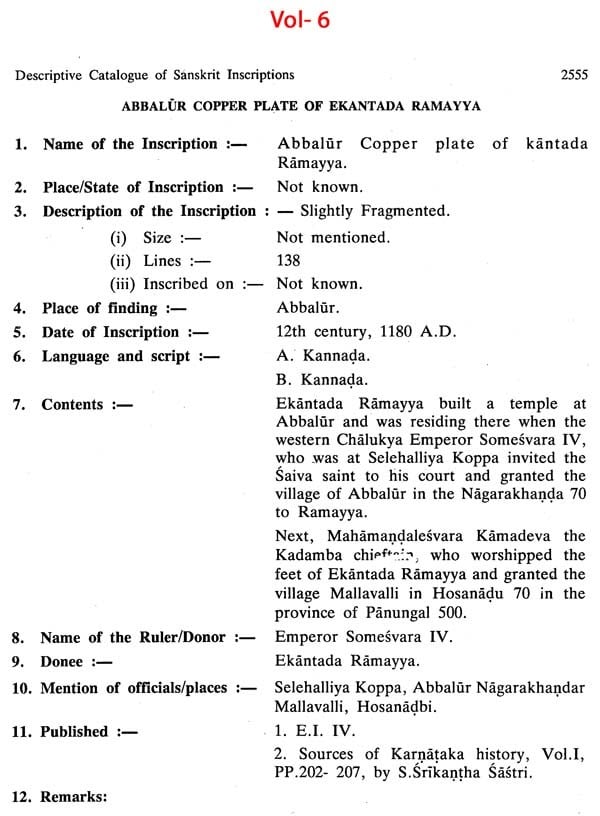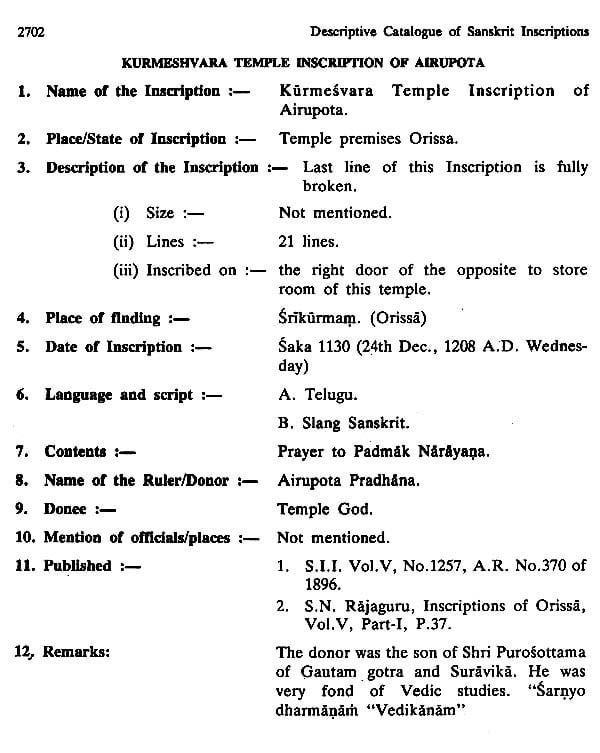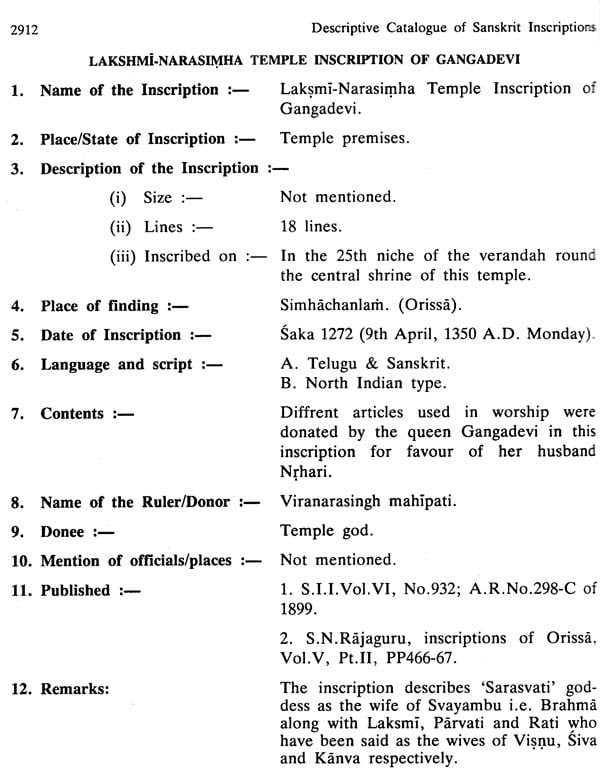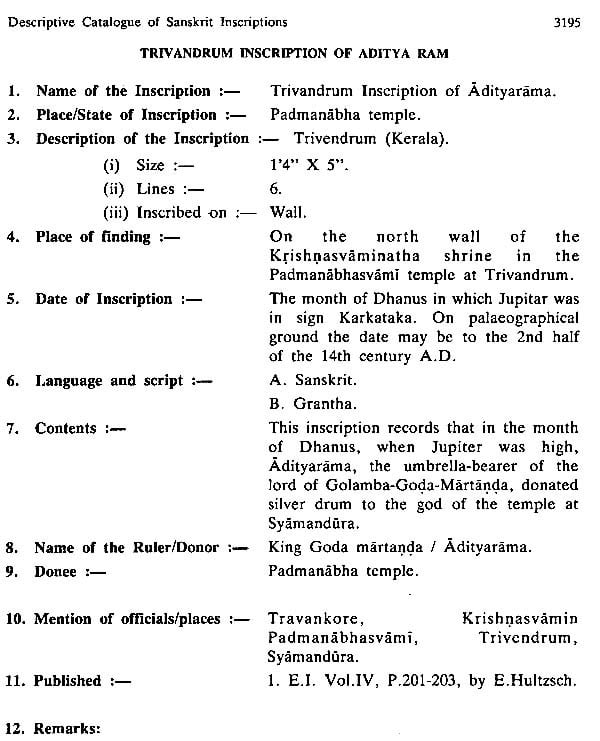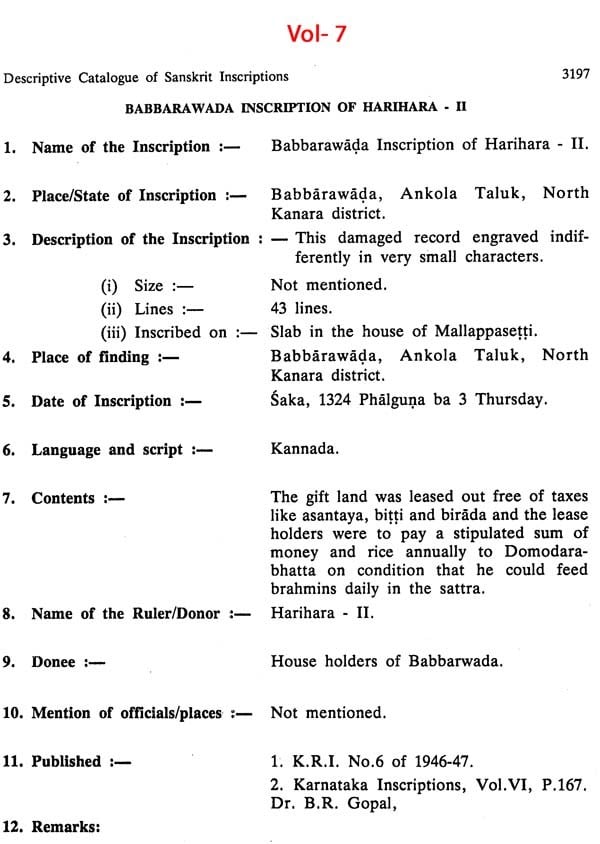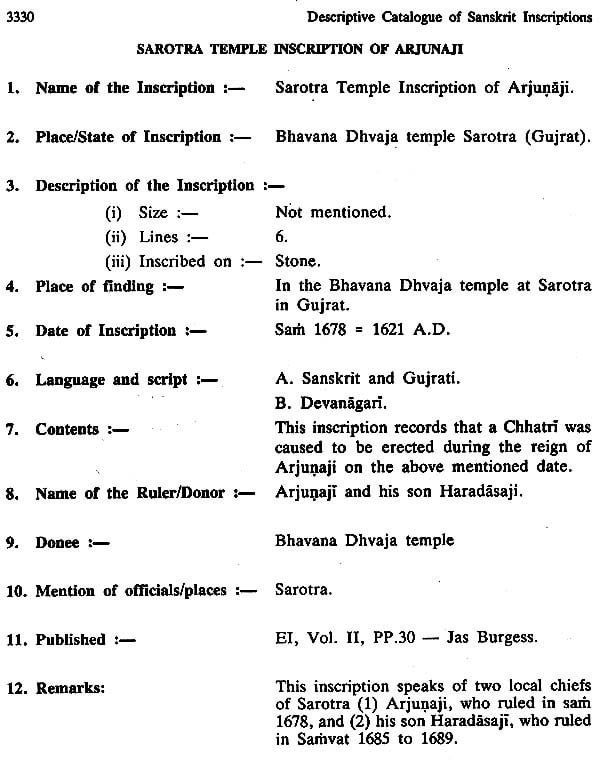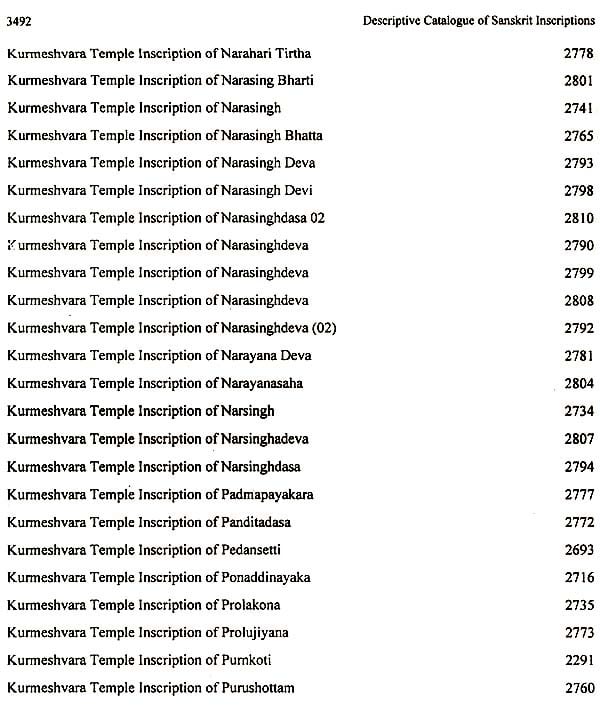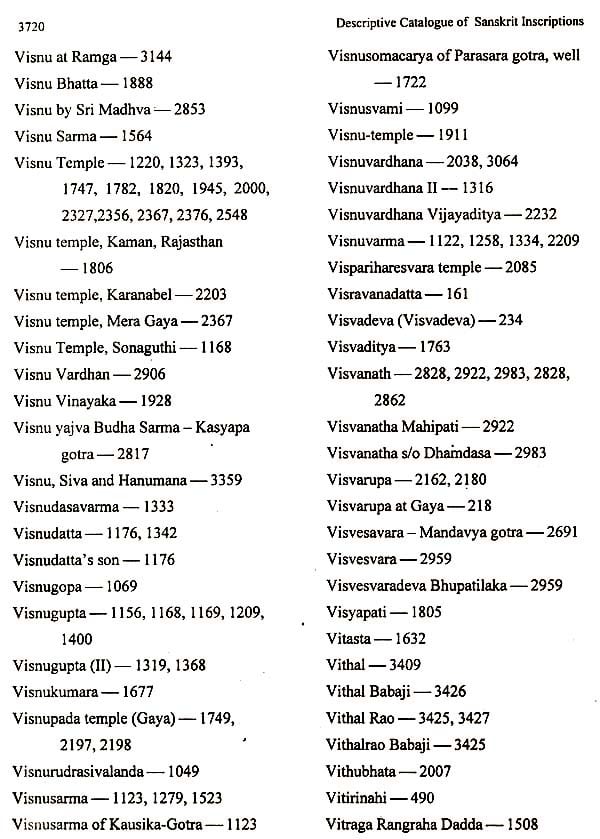
Descriptive Catalogue of Sanskrit Inscriptions- From 300 B.C. to 19th Century A.D. (Set of 7 Volumes)
Book Specification
| Item Code: | AZE441 |
| Author: | Pushpendra Kumar |
| Publisher: | NAG PUBLISHERS |
| Language: | ENGLISH |
| Edition: | 1998 |
| ISBN: | 8170817367 |
| Pages: | 3748 |
| Cover: | HARDCOVER |
| Other Details | 11.00x9.00 |
| Weight | 7 kg |
Book Description
The Descriptive Catalogue presents a detailed study of Sanskrit inscriptions numbering in thousands and found in whole of India, Nepal, Pakistan and Afganistan. The Catalogue' is a result of dedicated study and research of more than ten years and presents a clear and com prehensive picture of inscriptions right from 300 B.C. to 19th century A.D. It gives the vital and necessary formation and con tents of each inscription. It indicates its present position, language, script, time of composition, socio-economic and political importance.
It is expected that the scholars and researchers will find this work written in 7 volumes to be of immense importance for their studies in socio-economic history of India.
Archaeological excavations coupled with explorations and chance- finds have brought to light a sufficiently large number of Inscriptions engraved on the stone-pillars and rocks, stone-slabs and copper-plates, stone and bronze-images and terracotta seals. By and large, the inscribed seals and coins are more numerous. This inscriptional material, throws flood of light not only on the political but also on the social, religious, economic and administrative history of India.
The epigraphically researches and publications started in the second half of the 18th Century. Beginning from, the year 1784, a number of standard researches. journals were published such as, the Journal of the Asiatic Society of Bengal, Asiatic researches, Indian Antiquary, Journal of the Royal Asiatic Society, London: Madras Journal of literature and science, transactions of the literary society of Bombay and a few other periodicals were Published. In these journals, the texts and writings on numerous Inscriptions of Historical importance published.
India's contacts with other parts of the world, especially western Asia go back to the 3rd millennium B.C., as is evident from excavated remains. The Harappan civilization owed its complexity in no small measure to the Bronze-age cultures of West Asia. Innumerable inscribed tablets recovered from Ur and other sites bear eloquent testimony to the flourishing trade of West Asia with India is that renote past.
**Contents and Sample Pages**
